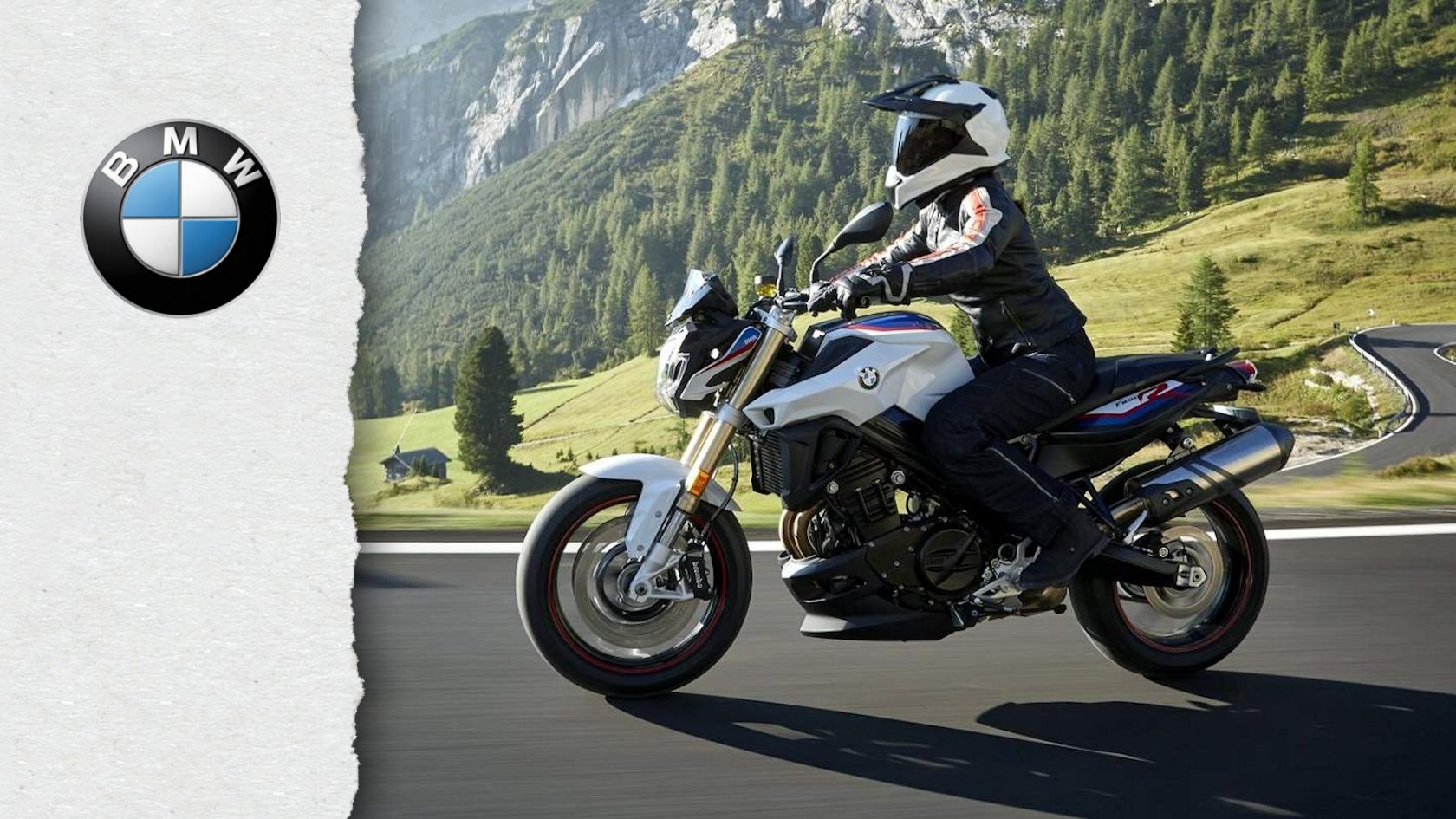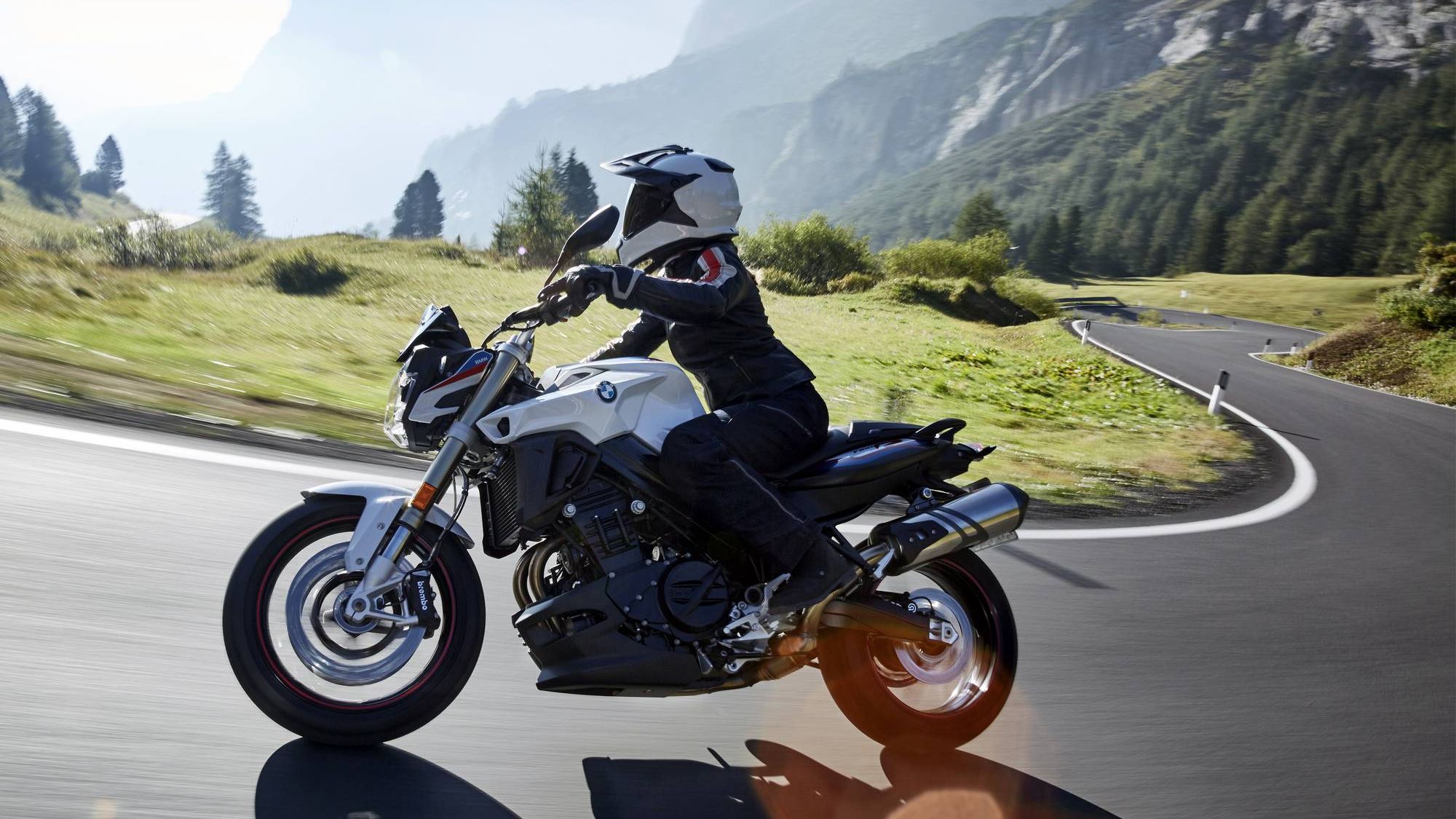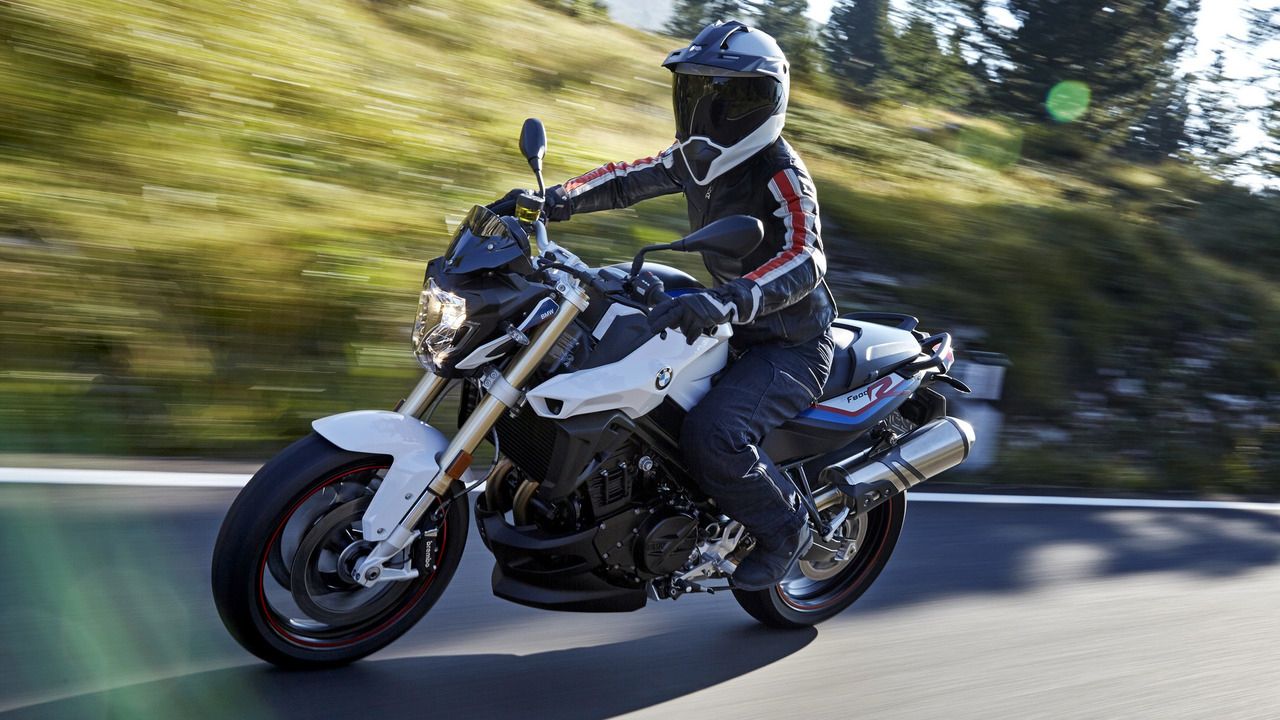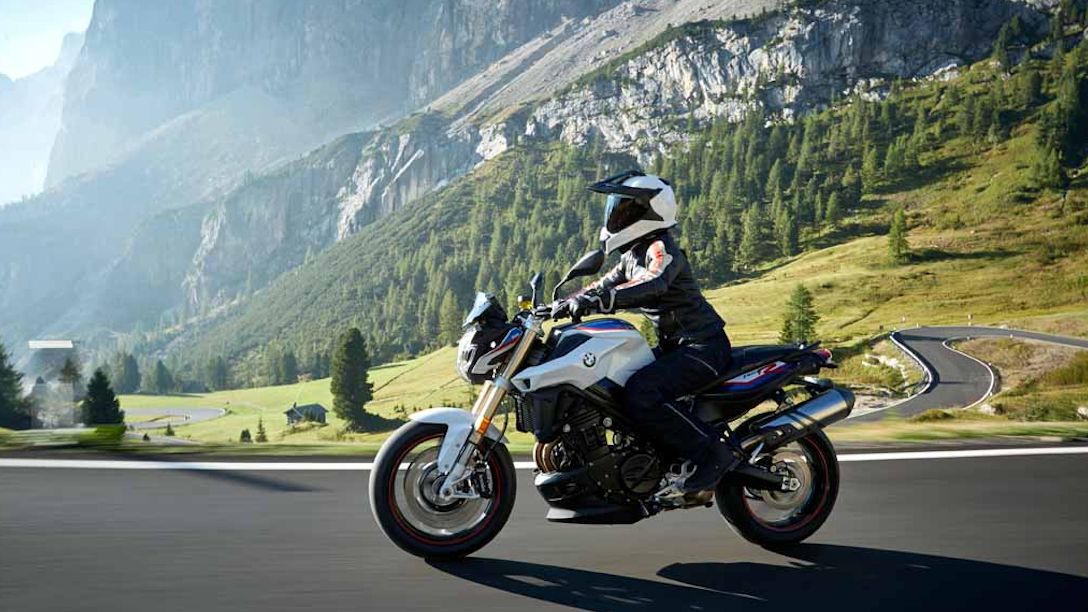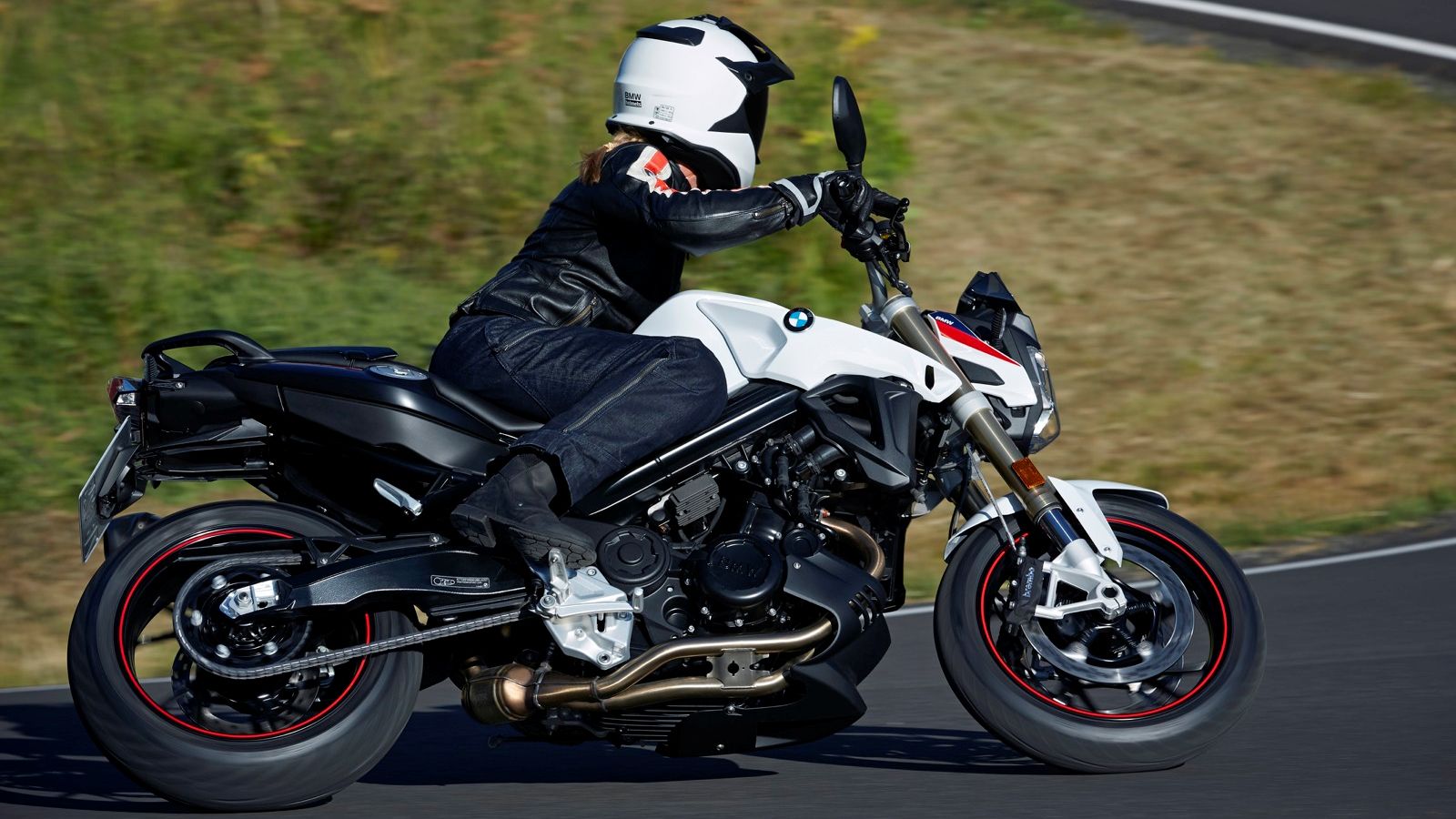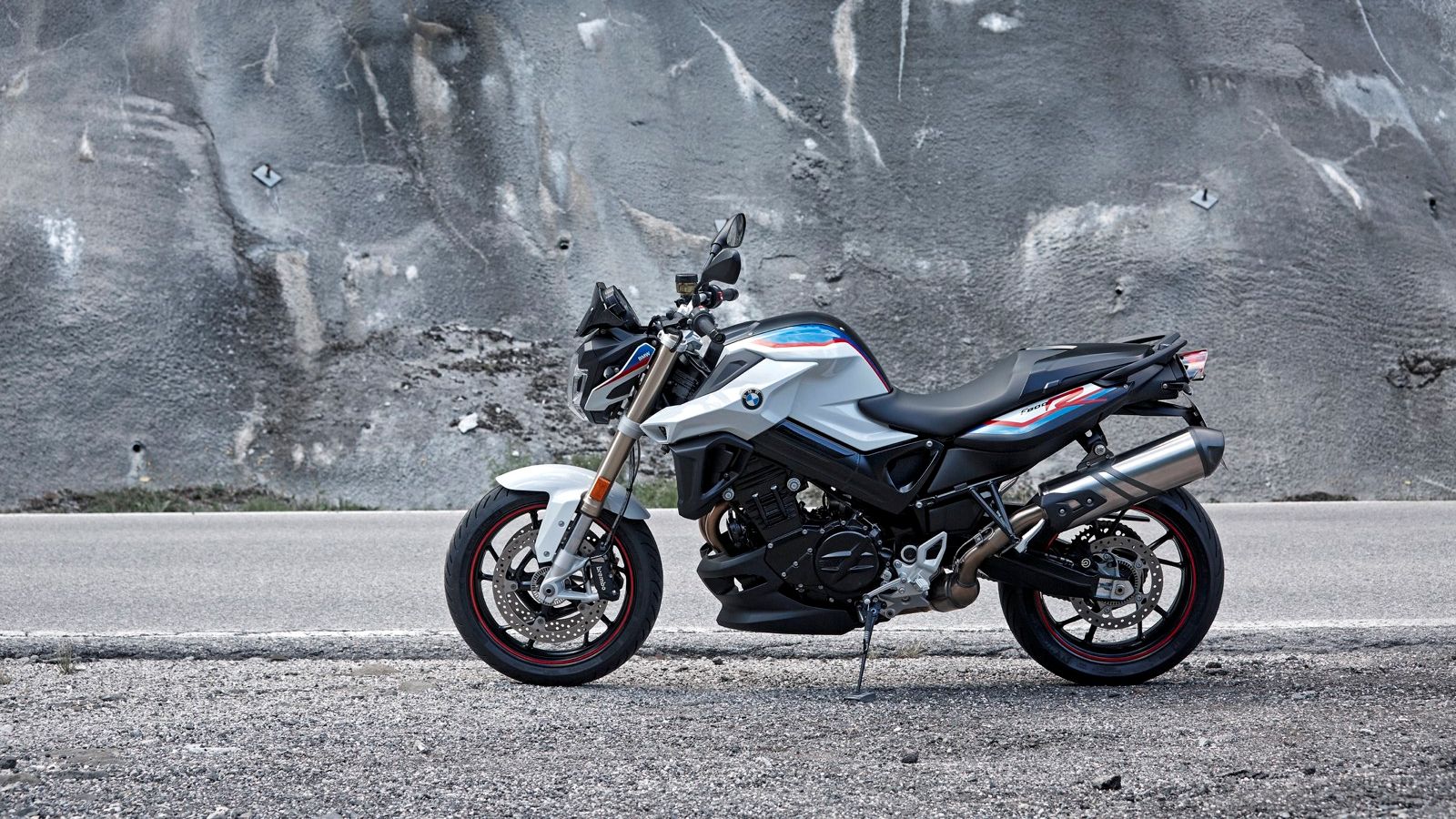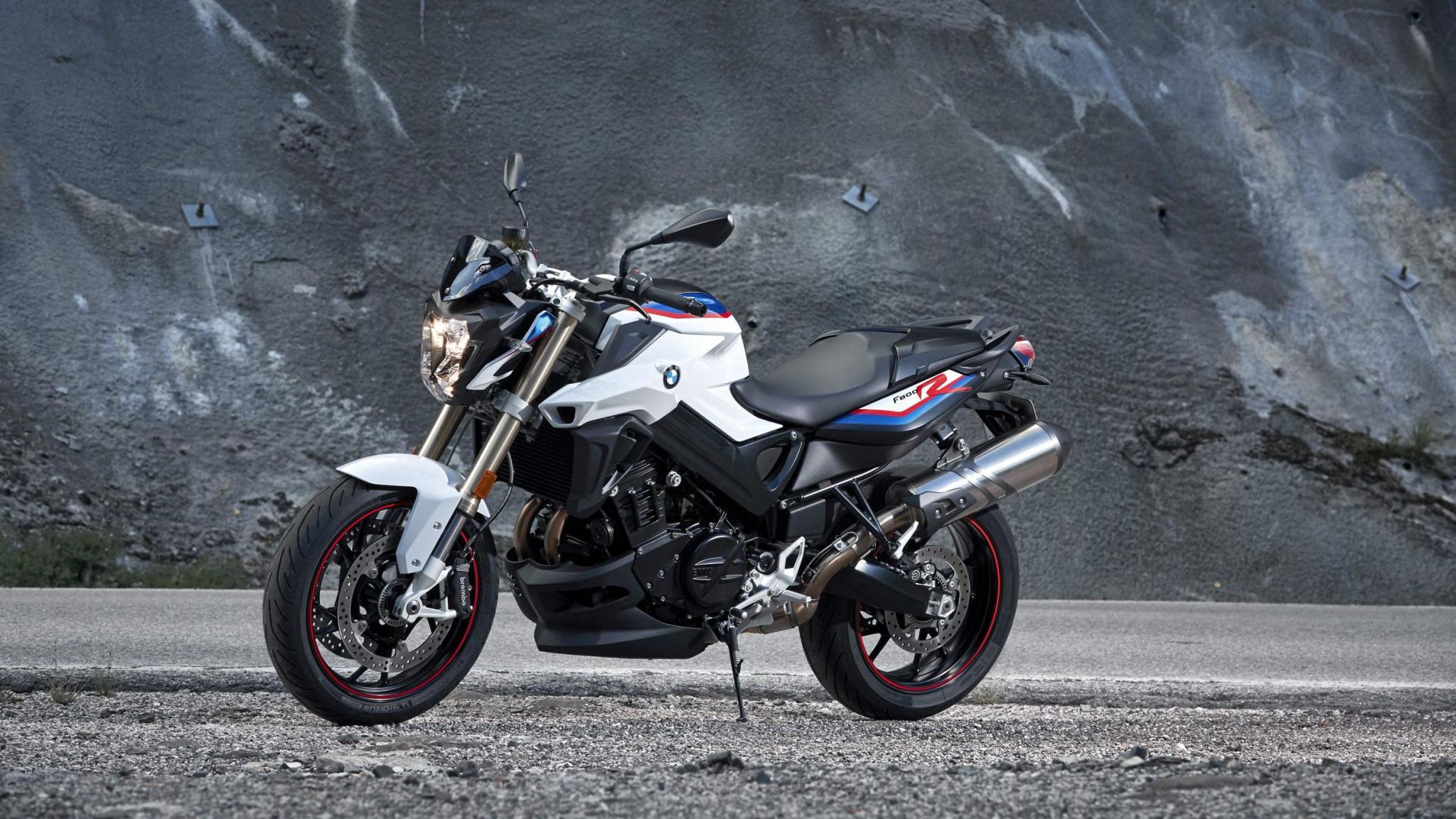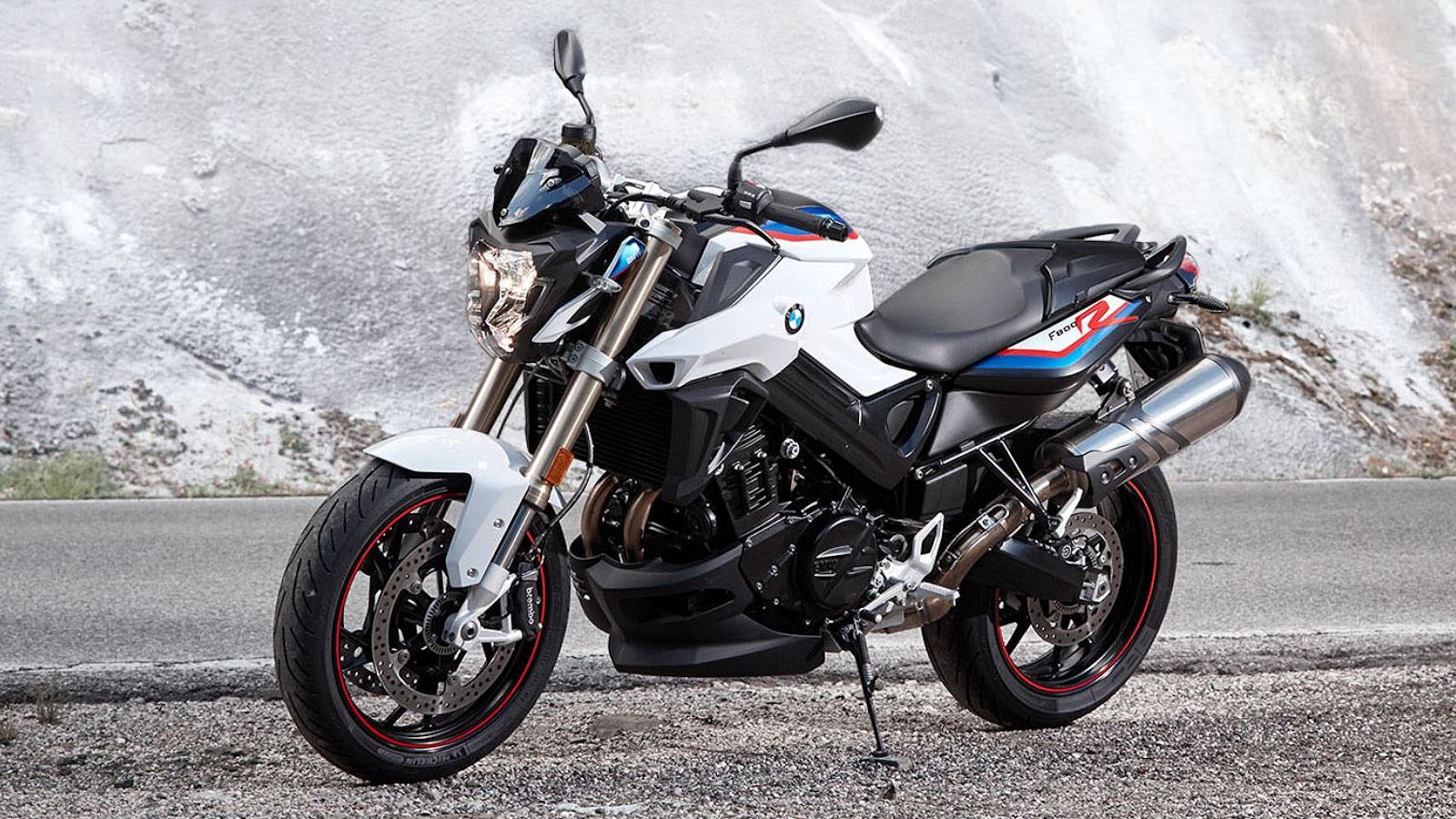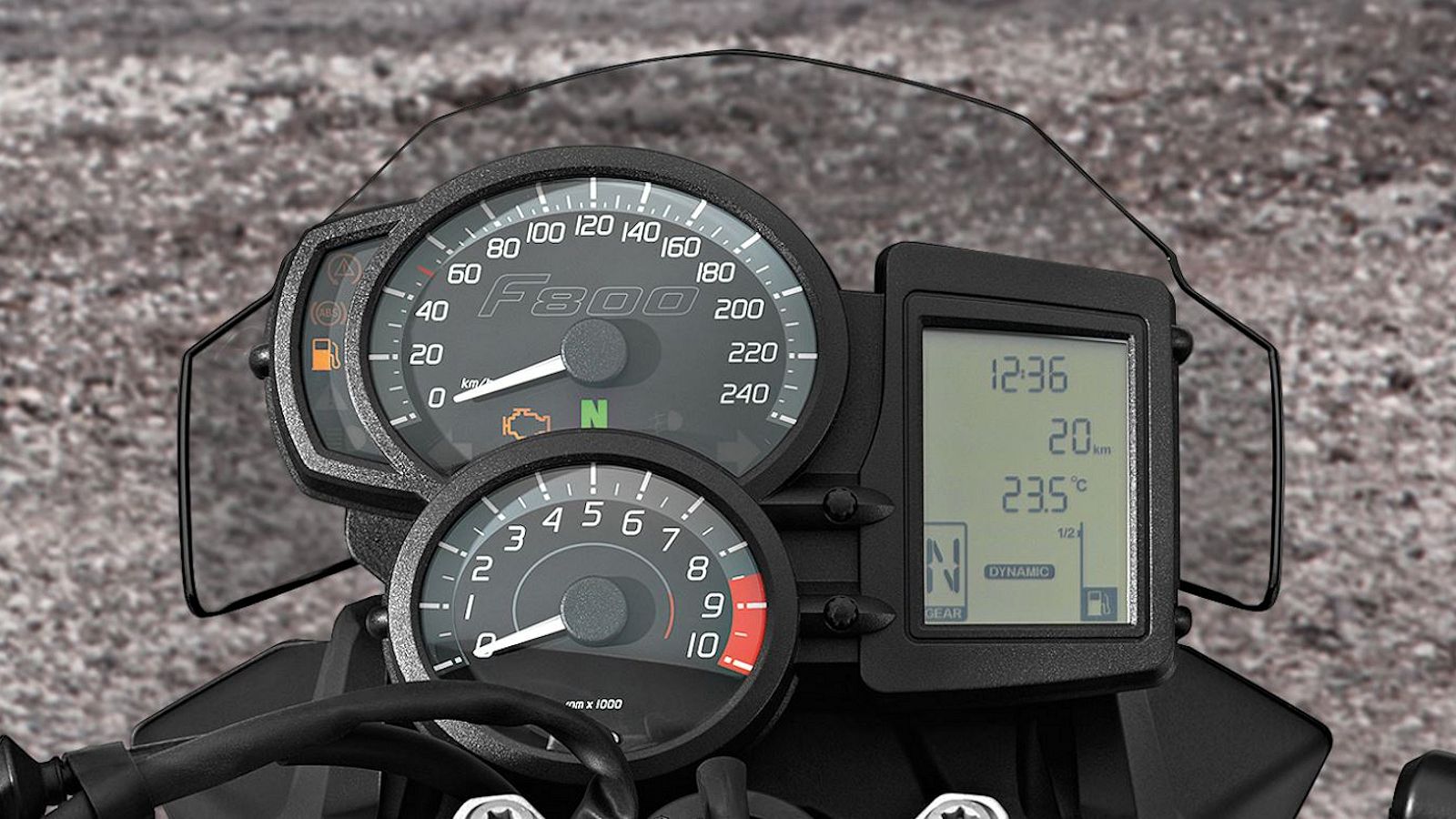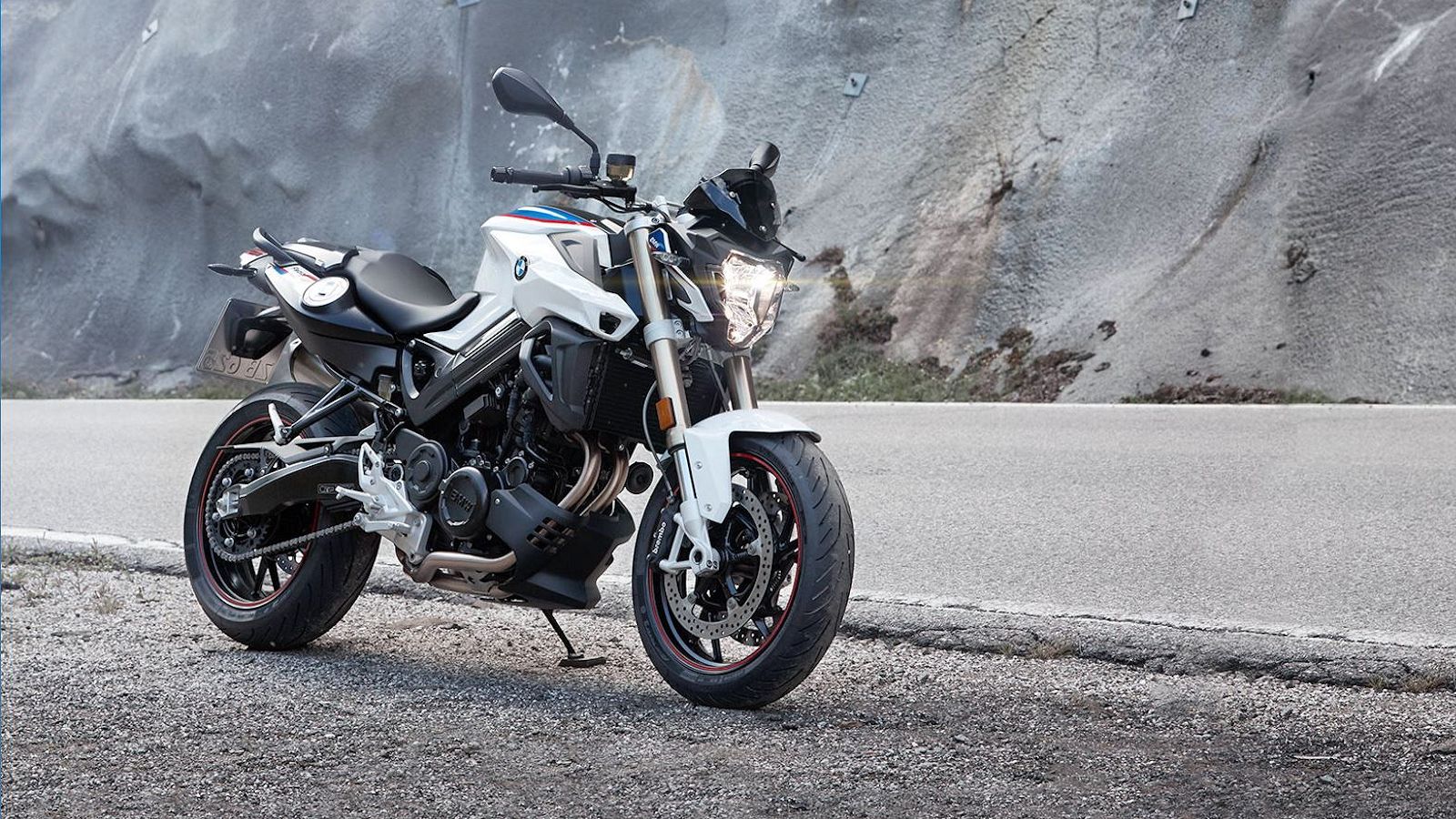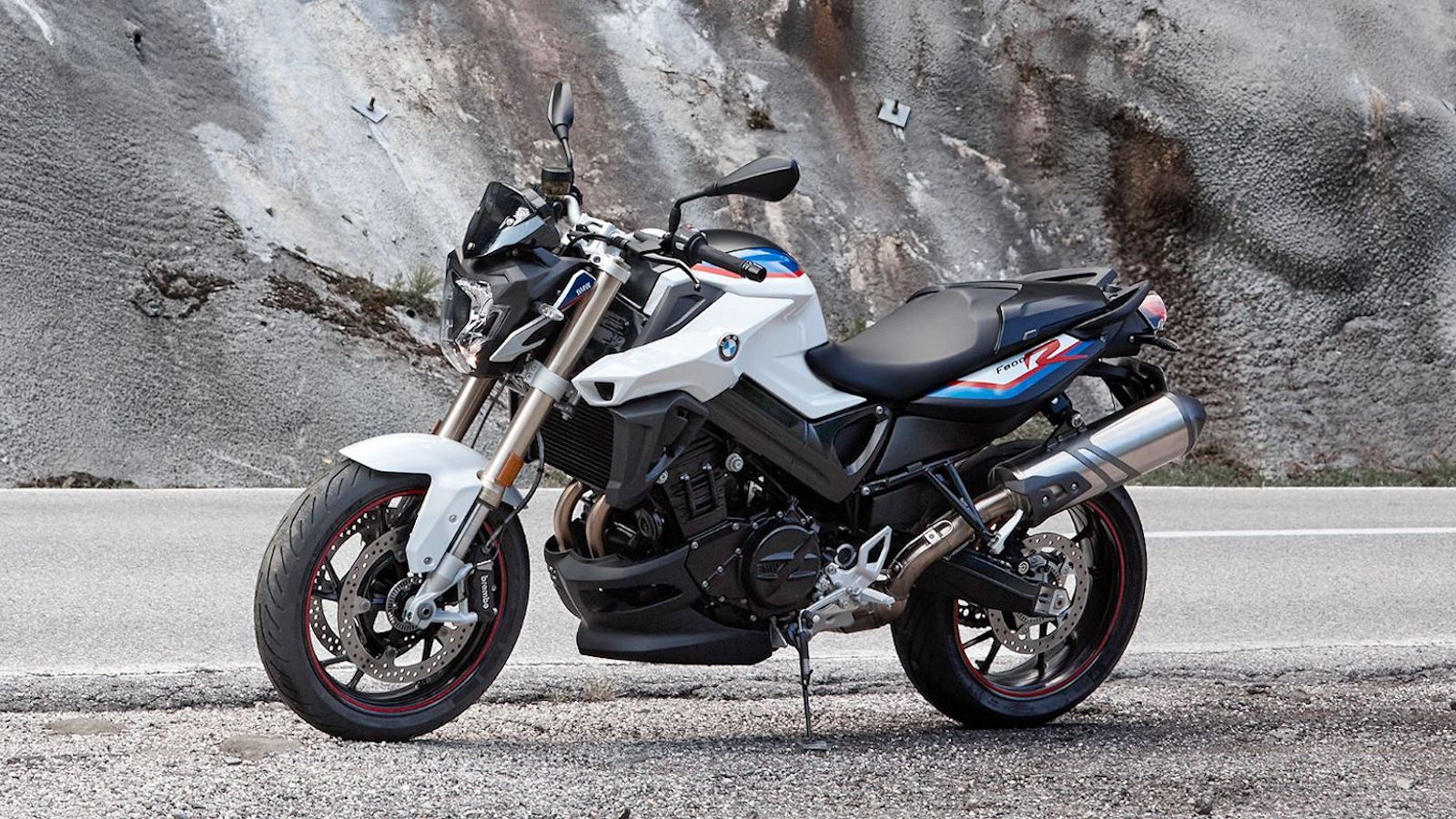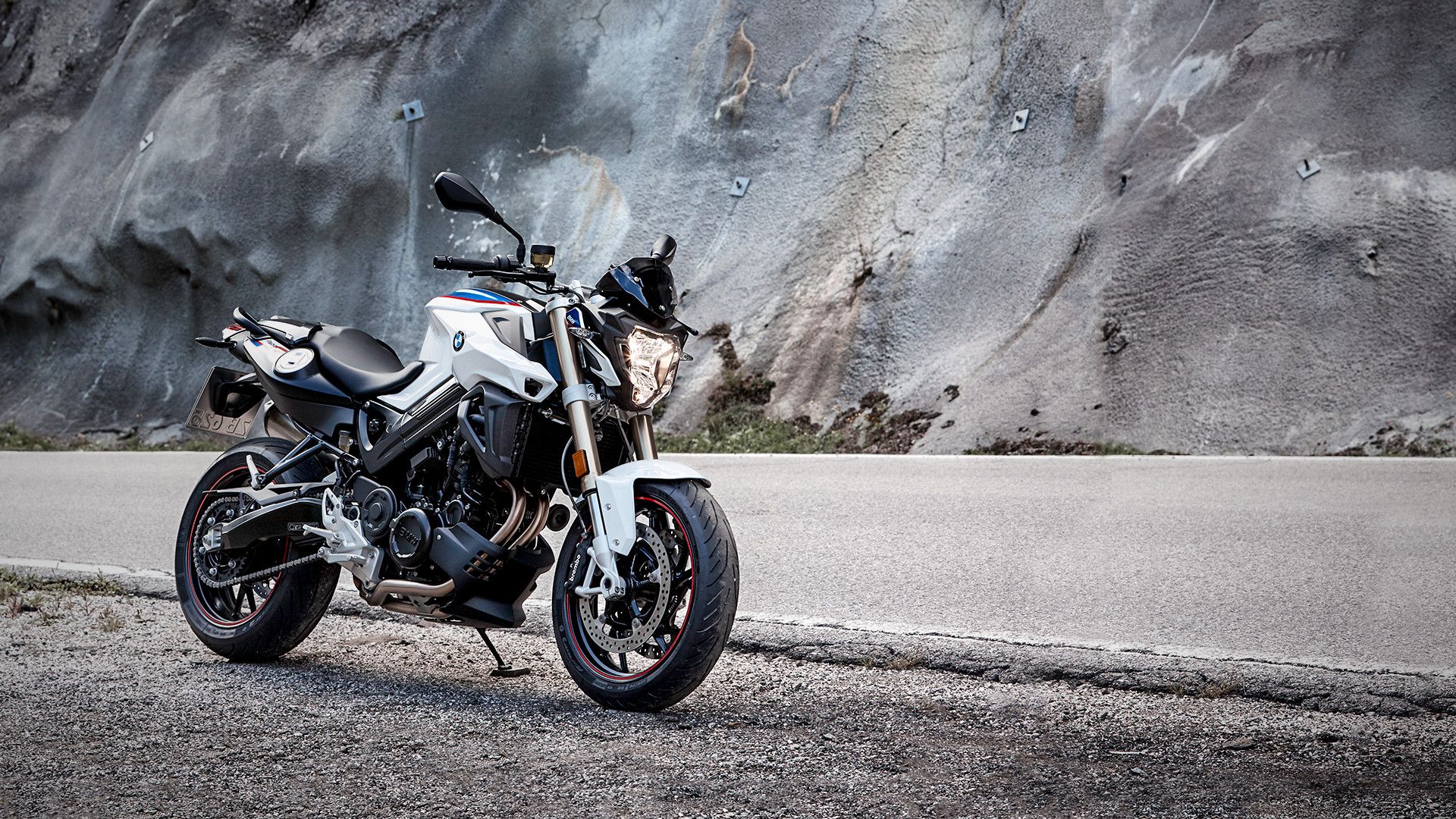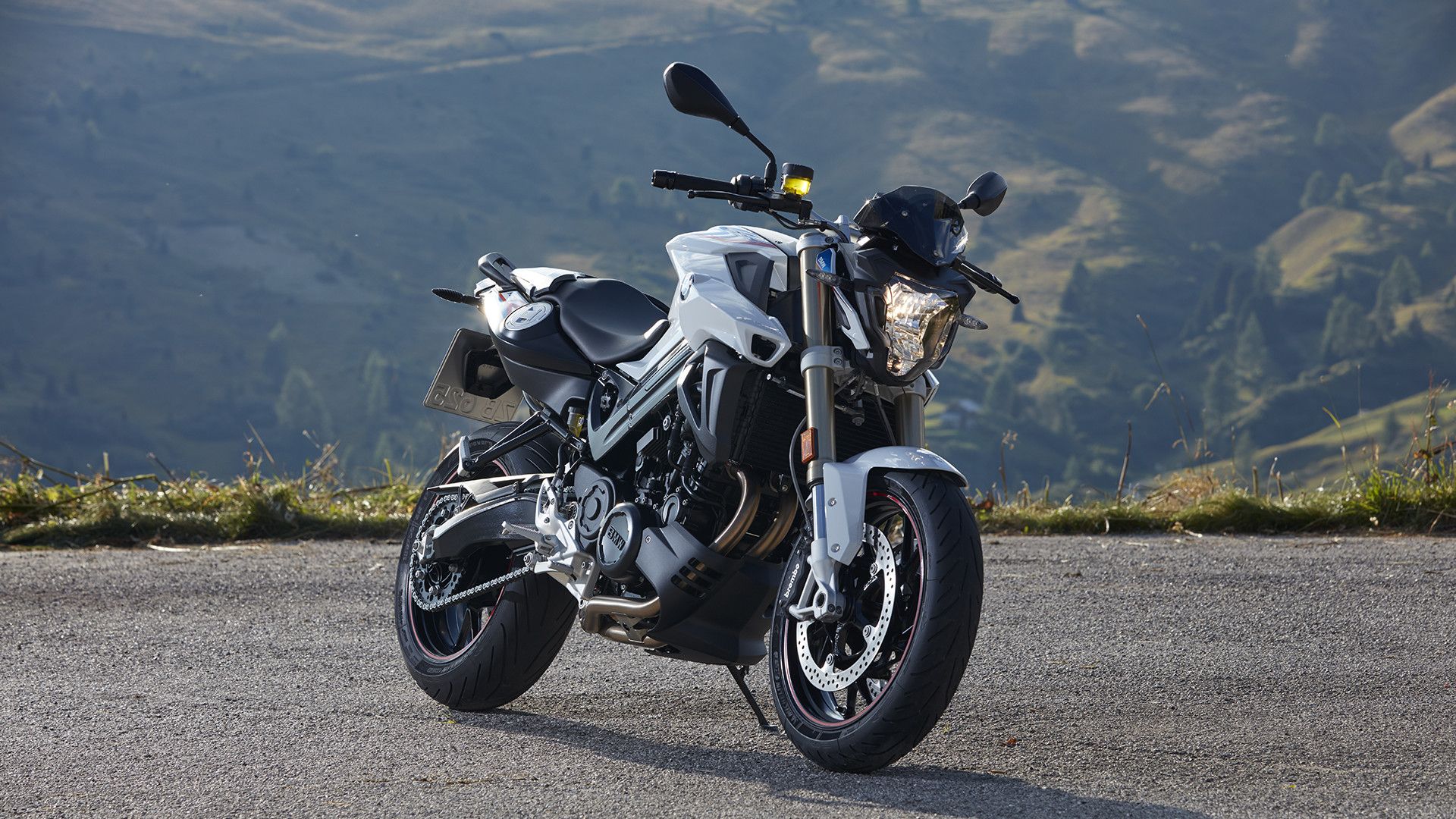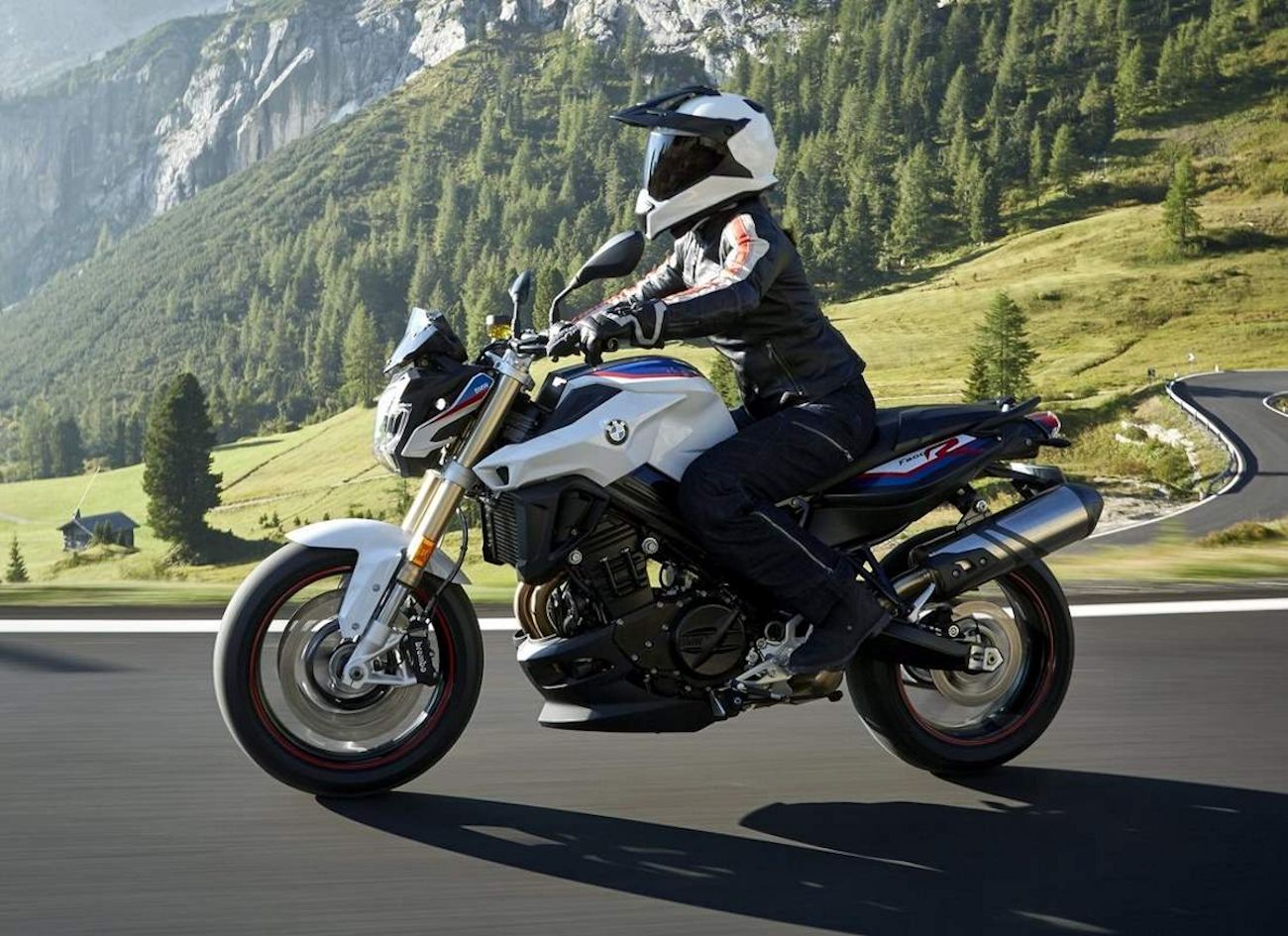BMW Motorrad carries its essential little F 800 R into the 2018 model year with the same essential design and, according to the factory, a noob-friendly demeanor. Meant to serve as a sort of Jack-of-all-Trades, it sports Riding Mode technology with ABS to bring a measure of flexibility and safety to the table. Delivering more power after the 2015 update, it comes from a proven, parallel-twin plant nestled away in a lightweight aluminum frame that is set up to have an appropriately nimble nature to keep things exciting for the more-experienced riders out there. Is this the mid-displacement, arguably entry-level roadster you've been looking for? Let's find out.
Continue reading for my review of the BMW F 800 R.
2015 - 2018 BMW F 800 R
- Make: Array
- Model: 2015 - 2018 BMW F 800 R
- Engine/Motor: Parallel-Twin
- [do not use] Vehicle Model: Array
BMW F 800 R Design
The F 800 R falls into the typical roadster format, which is to say it's a fairly naked standard with a sportbike bent. Inverted forks lend the front end an impression of great strength, but a cut-down front fender and minimal headlight housing clearly shows the factory didn't tack on any superfluous components or unnecessary heft, and the 448-pound wet weight bears out that assertion.
A compact flyscreen perches up top to shield the instrumentation that is comprised of a pair of analog clocks for the speedometer and tach in an unusual over-under arrangement with an LCD screen off to the side that displays other useful metrics. I'm not sure if the factory set it up that way for aesthetics or just to keep the instrumentation nice and narrow, but I'm definitely feelin' it.
The handlebar comes with very little rise in its shape and dead-short risers to mount it to the top tripletree, so it definitely encourages the rider to adopt an aggressive, forward-leaning posture. Jockey-mount pegs reinforce that to form a very race-tastic rider's triangle, so go ahead and throw around that body English with abandon, the “R” can take it.
There's a bit of rise to the crest of the 3.9-gallon fuel tank, but the flyline tumbles precipitously to the stock 31.1-inch-tall seat. Shorter inseams can get some relief from the optional extra-low seat that'll put your butt 30.3 inches off the deck, and for those of you who don't need help to reach the top shelf, the 33.1-inch seat should give you the legroom you're looking for.
A narrow waist pinches the back of the tank and the front of the seat to give your thighs a break, but the saddle flares out to form an adequate butt-bucket (individual results may vary) with a bit of rise to the p-pad to give you a little extra security under heavy acceleration. A grabrail and subframe-mount, fold-up footpegs provide the passenger with same, though if you want to stay friends with said passenger I do recommend that you exercise some restraint at the right wrist.
An LED taillight ensures that you're plenty visible from the rear with a small mudguard/plateholder to finish out the gear in the rear. Overall, the R carries itself with oodles of sportbike appeal, and I expect it to mix well with the machines from the Big Four dominated naked market.
BMW F 800 R Chassis
Aluminum was the material of choice for the main structure to keep things light. A bridge-type frame uses the engine to complete the assembly and displace the downtube/cradle section of the frame for even more weight savings. The steering head establishes a 26-degree rake angle with 3.58 inches of trail for a decidedly eager demeanor in the corners and a flickable nature that is sure to deliver the necessary excitement and endear itself to the masses.
A set of 45 mm, usd forks support the front end on fixed preload and damping values, but the cast-aluminum, two-sided swingarm rides with a coil-over strut for support that comes with a handwheel for quick preload adjustments plus an adjustable rebound damper so you can dial in for comfort and control.
Cast-aluminum wheels round out the rolling chassis with a 120/70-17 up front followed by a 180/55-17, and the rubbers come with a ZR rating, so once again, the R shows it has the capacity to perform well beyond the meager envelope of the inexperienced riders and give even an old salt enough fun to make it worthwhile getting geared up. The anchors reflect this great potential for speed with a pair of 320 mm discs and four-pot calipers to slow the front wheel, and a 265 mm disc and single-piston caliper to slow the rear. Additionally, the factory chucks on its proprietary ABS as part of the standard equipment package that lets you safely get the most out of the available traction.
|
Frame: |
Aluminum bridge-type frame with load-bearing engine |
|
Front suspension/Travel: |
Upside-down telescopic fork, Ø 45 mm/4.9" (125 mm) |
|
Rear suspension/Travel: |
Cast aluminum 2-sided swing arm, central spring strut, spring pre-load hydraulically adjustable (continuously variable) via handwheel, rebound damping adjustable/ 4.9" (125 mm) |
|
Castor: |
3.58" (91 mm) |
|
Steering head angle: |
26° |
|
Wheels: |
Cast aluminum wheels |
|
Rims, front/rear: |
3.50 x 17"/ 5.50 x 17” |
|
Tire, front: |
120/70 ZR 17 |
|
Tire, rear: |
180/55 ZR 17 |
|
Brake, front: |
320 mm, Dual floating disc brakes, 4-piston fixed calipers |
|
Brake, rear: |
265 mm, Single disc brake, single-piston floating caliper |
|
ABS: |
BMW Motorrad ABS |
BMW F 800 R Drivetrain
Rather than using one of its popular boxer engines, the Werke instead used a relatively narrow parallel-twin engine to deliver the goods, to the tune of 90 horsepower at 8,000 rpm that's backed up by 63 pound-feet that peaks at 5,800 rpm. Since it's a liquid-cooled plant, the engine water jacket helps to suppress the mechanical noises within the cases for a bit more in the way of what you might call social value.
Dual over-head cams time the 8-valve head with a ride-by-wire throttle control that manages the induction after the signal is washed through the filter that is the Riding Modes feature. You get one for “Rain” and one called “Road” so you can dial in the power deliver to suit your conditions; too bad the Automatic Stability Control (traction control) is considered optional equipment. I mean, you obviously can have it if you want it, but you'd better know that you want it when you buy the bike. Oh well, I reckon Beemer had to keep the price down somehow.
The 82 mm bores and 75.6 mm stroke adds up to a total displacement of 798 cc with a 12-to-1 compression ratio that, unfortunately, will have you feeding it top-dollar road champagne to prevent pre-ignition/detonation and dieseling. The electronic engine controls and catalyst in the exhaust help the “R” meet EU-4 emissions standards while turning in a claimed 55 mpg efficiency rating. Top speed clocks in, according to the factory, at a rather ambiguous “over 125 mph,” and to be honest, if you need more than that or if a few more mph makes a difference to you, you're looking at the wrong bike.
|
Engine: |
Liquid cooled, 4-stroke parallel twin engine, four valves per cylinder, double overhead camshafts, dry sump lubrication |
|
Bore x stroke: |
82 mm x 75.6 mm |
|
Displacement: |
798 cc |
|
Rated output: |
90 hp (66 kW) at 8,000 rpm |
|
Max. torque: |
63 lb-ft (86 Nm) at 5,800 rpm |
|
Compression ratio: |
12.0:1 |
|
Mixture control / engine management: |
Electric fuel injection |
|
Emission control: |
Closed-loop 3-way catalytic converter, emission standard EU-4 |
|
Clutch: |
Multi-plate wet clutch, mechanically operated |
|
Gearbox: |
Constant-mesh 6-speed gearbox with straight cut gears |
|
Drive: |
Chain drive 2.35:1 |
BMW F 800 R Pricing
Price is definitely not a prohibitive factor with the F 800R. You can score a 2018 model for $9,995 in the dark-and-sinister Black Storm Metallic or red-over-black Racing Red package or choose the fetching Light White/Lupin Blue Metallic/Racing Red combination for $250 more.
|
Package |
Includes |
Additional Cost |
|
Dynamic: |
LED Rear Light, Engine Spoiler, Passenger Seat Cover |
+$295 |
BMW F 800 R Competitors
Mid-displacement naked sportbikes are a dime-a-dozen these days, but given the strong visual features that the F 800 R brings to the table, I felt compelled to grab Kawasaki's Z900 ABS because of its own sense of style, which is not an exercise in subtlety, I assure you. The factory's “Z” family tree is where all its naked/standard bikes reside, but in spite of the lack of body paneling, the Z900 is clearly a Kawi with all the genetic markers you'd expect. An isolated headlight can and flyscreen gives it an appropriately naked entry, and the spiky cheek fairings add some more character with little in the way of wasted weight capacity. In short; if you like the looks of the Beemer F 800 R, you may well dig the Z900, but there's much more to love about both, vanity notwithstanding.
Kawi rolls with a steel Trellis frame to form the main support structure, a heavier option than the Beemer's aluminum bones, but you'd never suspect it based solely on the 463.1-pound wet weight that's just 15-pounds heavier than the “R.” Kawasaki steps up its game in the suspension department with adjustable preload and rebound damping at both ends of the bike, a bit of delightfulness that Beemer can match, but doesn't. Brake diameter slips a bit on the “Z” to leave the “R” with better anchors, but only just, and I submit the ABS that comes stock on both probably helps mitigate that small difference to a large degree by allowing you to get the most out of the system.
Engine size favors the “Z” with its four-bore, 948 cc mill, and of course, that difference is reflected in the power numbers. Kawasaki breaks the 100-horsepower mark with authority, based on the factory's own 123-horsepower, 73.1 pound-foot numbers against 90/63 from the BMW. In spite of the increased power figures, Kawi lets loose of the Z900 for a low $8,399, and that's a very competitive price in light of Beemer's pricetag on its F 800 R.
He Said
“Call me crazy, but in spite of the power, and in spite of the price, I still prefer Beemer's entry here. Why? Well, because the Kawi is ugly as a mud fence in mine eyes, and I don't mind paying a bit more for BMW's reputation for quality and longevity.”
She Said
My wife and fellow motorcycle writer, Allyn Hinton, says, “There's quite a bit of fun in this bike. In the 2015 update, it got a shorter first and second gear so power delivery is strong. Braking is good and the ride is smooth enough. The seat isn't terribly comfortable for a long ride, but for a commute, it's good enough. If you plan to take it up the Interstate, it's not a surprise that you'll probably want to go with a taller windscreen.”
BMW F 800 R Specifications
|
Engine & Drivetrain: |
|
|
Engine: |
Liquid cooled, 4-stroke parallel twin engine, four valves per cylinder, double overhead camshafts, dry sump lubrication |
|
Bore x stroke: |
82 mm x 75.6 mm |
|
Displacement: |
798 cc |
|
Rated output: |
90 hp (66 kW) at 8,000 rpm |
|
Max. torque: |
63 lb-ft (86 Nm) at 5,800 rpm |
|
Compression ratio: |
12.0:1 |
|
Mixture control / engine management: |
Electric fuel injection |
|
Emission control: |
Closed-loop 3-way catalytic converter, emission standard EU-4 |
|
Clutch: |
Multi-plate wet clutch, mechanically operated |
|
Gearbox: |
Constant-mesh 6-speed gearbox with straight cut gears |
|
Drive: |
Chain drive 2.35:1 |
|
Chassis: |
|
|
Frame: |
Aluminum bridge-type frame with load-bearing engine |
|
Front suspension/Travel: |
Upside-down telescopic fork, Ø 45 mm/4.9" (125 mm) |
|
Rear suspension/Travel: |
Cast aluminum 2-sided swing arm, central spring strut, spring pre-load hydraulically adjustable (continuously variable) via handwheel, rebound damping adjustable/ 4.9" (125 mm) |
|
Castor: |
3.58" (91 mm) |
|
Steering head angle: |
26° |
|
Wheels: |
Cast aluminum wheels |
|
Rim, front: |
3.50 x 17" |
|
Rim, rear: |
5.50 x 17” |
|
Tires, front: |
120/70 ZR 17 |
|
Tires, rear: |
180/55 ZR 17 |
|
Brake, front: |
320 mm, Dual floating disc brakes, 4-piston fixed calipers |
|
Brake, rear: |
265 mm, Single disc brake, single-piston floating caliper |
|
ABS: |
BMW Motorrad ABS |
|
Dimensions & Capacities: |
|
|
Length: |
84.5" (2,145 mm) |
|
Width (incl. Mirrors): |
33.9" (860 mm) |
|
Height (excl. mirrors): |
48.7" (1,235 mm) |
|
Wheelbase: |
59.8" (1,520 mm) |
|
Seat height, unladen weight: |
Extra High Seat: 33.1", High Seat: 32.2", Standard: 31.1", Low Seat: 30.7", Low Seat/Extra Low Seat: 30.3" |
|
Inner leg curve, unladen weight: |
Extra High Seat: 73.8", High Seat: 72.2", Standard: 70.1", Low Seat: 69.7", Low Seat/Extra Low Seat: 68.5" |
|
Unladen weight, road ready, fully fueled: |
448 lbs (203 kg) |
|
Permitted total weight: |
891 lbs (405 kg) |
|
Payload (with standard equipment): |
445 lbs (202 kg) |
|
Usable tank capacity: |
3.9 gal (15 l) |
|
Reserve: |
Approx. 0.8 gal (3.0 l) |
|
Maximum speed: |
Over 125 mph |
|
Fuel consumption: |
55 mpg (WMTC) |
|
Fuel type: |
Premium Unleaded, minimum octane 95 (RON) |
|
Electricals: |
|
|
Alternator: |
Three-phase 400 W generator |
|
Battery: |
12 V / 12 Ah, maintenance-free |
|
Details: |
|
|
Standard Features: |
LED Rear Light, Engine Spoiler, Pillion Seat Cover, TPM (Tire Pressure, Monitoring), ESA (Electronic Suspension Adjustment), High Handlebars, Anti-Theft Alarm, Accessory Socket, Low Seat, Comfort Seat, Design Option Wheels (Black Wheel, Red Stripe) |
|
Colors: |
Racing Red, Black Storm Metallic, Light White/Lupin Blue Metallic/Racing Red |
|
Price: |
$9,995 |
References
Kawasaki Z900 ABS
See our review of the Kawasaki Z900 ABS.
Read more BMW Motorrad news.


